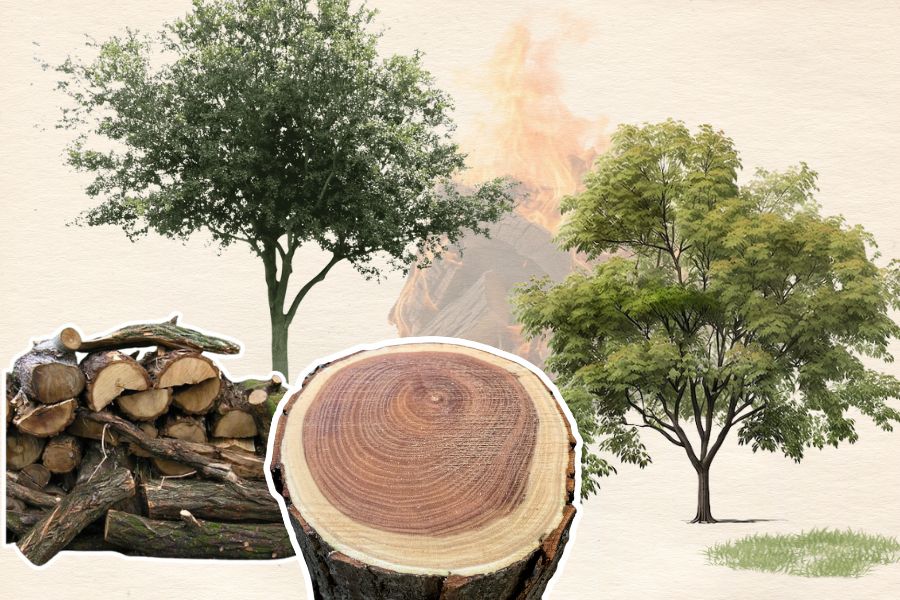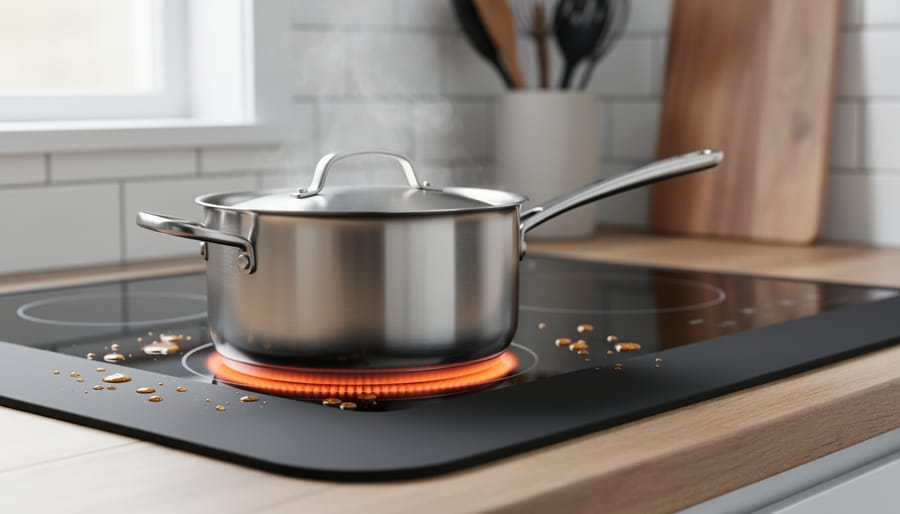When it comes to selecting firewood for heating, it’s essential to choose a reliable and efficient option. Locust firewood, including black locust and honey locust, is a popular choice due to its notable characteristics.
This guide will explore the qualities of black locust and honey locust firewood, their benefits, harvesting considerations, and burning tips.
Let’s delve into the world of locust firewood and discover if it’s the right choice for your heating needs.
Evaluating Black Locust and Honey Locust Firewood
Both black locust wood and honey locust wood are highly regarded for their suitability as firewood. With its dense composition and high heat output, Black locust is known for its excellent burning qualities. Honey locust wood, on the other hand, offers its own unique properties and benefits.
Let’s examine each type of locust firewood in more detail.
Types of Locust Trees Used as Firewood
When it comes to locust firewood, two primary types of locust trees are widely utilized: black locust (Robinia pseudoacacia) and honey locust (Gleditsia triacanthos).
Let’s explore each type of wood and its characteristics as firewood:
Black Locust Firewood
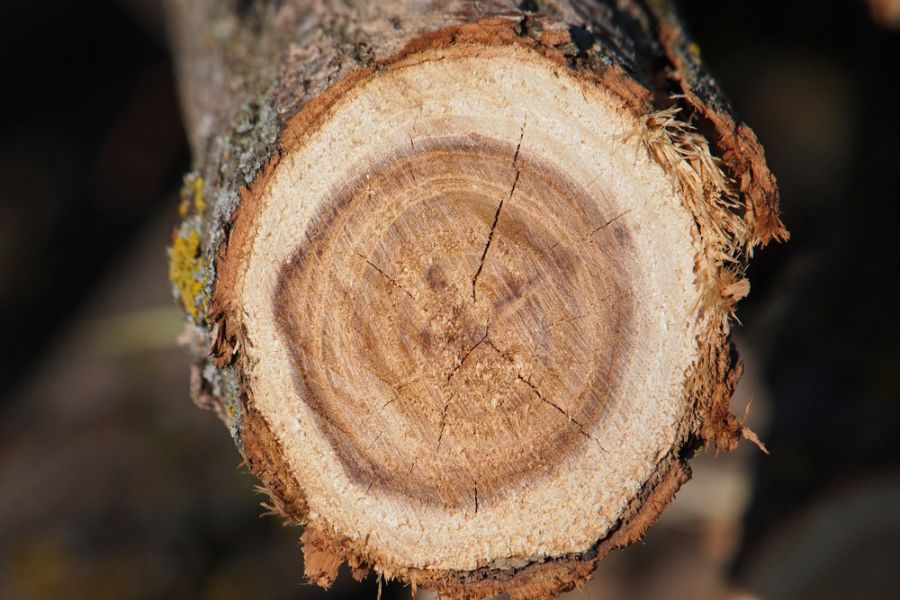
Black locust, also known as false acacia, is a hardwood tree native to the eastern United States. It is highly regarded for its excellent burning qualities, making it a preferred choice for firewood.
Here are some key characteristics of black locust:
- Density and Weight: Black locust is known for its exceptional density, making it one of the heaviest firewood options available. The high density contributes to its slow-burning nature and prolonged heat output.
- Energy Content: Black locust firewood has a high energy content, meaning it produces a significant amount of heat when burned. This makes it an efficient choice for heating purposes.
- Moisture Content and Seasoning Requirements: Proper seasoning is crucial for black locust wood to ensure optimal burning efficiency. The wood should be seasoned for at least six months to reduce its moisture content to around 10% to 15%.
- Burning Qualities and Heat Output: Black locust burns hot and generates substantial heat. It is known for producing intense flames and long-lasting coals, making it suitable for both indoor and outdoor use.
- Creosote Buildup and Smoke Production: Black locust firewood tends to produce minimal smoke and creosote buildup compared to some other firewood types. This characteristic reduces the risk of chimney blockages and the need for frequent cleaning.
Honey Locust Firewood
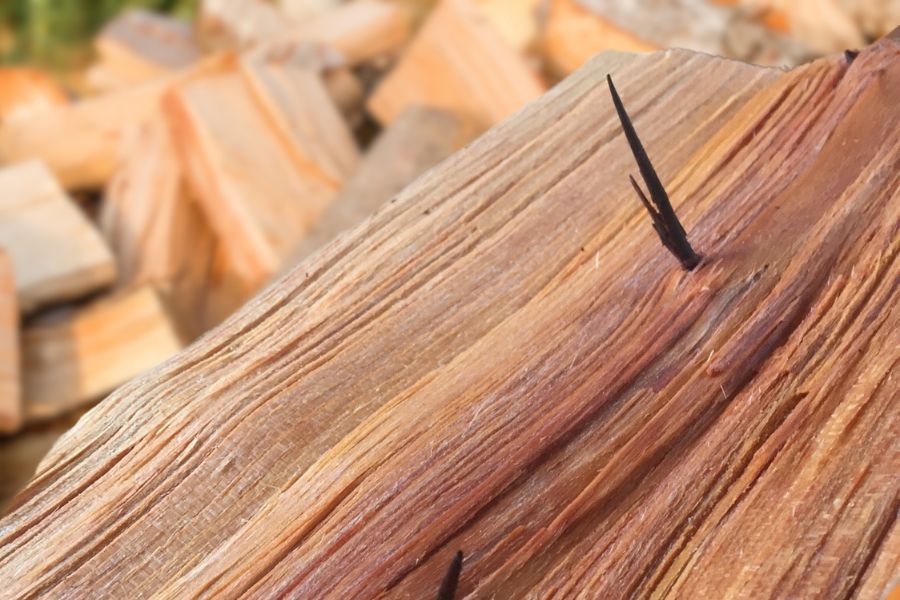
Honey locust trees are also used as a source of firewood, offering their own unique characteristics. Here are some notable features of honey locust:
- Density and Weight: Honey locust firewood shares a similar density and weight to black locust wood, providing a slow and sustained burn.
- Energy Content: Honey locust firewood possesses a high energy content, resulting in efficient combustion and heat production.
- Moisture Content and Seasoning Requirements: Proper seasoning is essential for burning honey locust firewood. Similar to black locust, it is recommended to season the wood for approximately six months to achieve a moisture content of around 10% to 15%.
- Burning Qualities and Heat Output: Honey locust firewood burns cleanly and efficiently, offering a long-lasting heat source. It produces minimal smoke and is suitable for use in wood stoves and fireplaces.
- Creosote Buildup and Smoke Production: Honey locust firewood is known for producing very little smoke and creosote buildup, ensuring a cleaner burning experience.
Both black locust and honey locust firewood offer excellent burning qualities, long-lasting heat, and minimal smoke production. The choice between the two ultimately depends on personal preferences, availability, and regional factors.
Regardless of the specific locust tree chosen, properly harvested, seasoned, and burning locust wood can provide a reliable and efficient source of heat for your home.
Comparing Black Locust and Honey Locust Wood
When considering locust firewood, it’s important to compare the qualities of black locust and honey locust to determine which best suits your heating needs.
Black locust firewood offers exceptional density, high heat output, and extended burn times. It is particularly well-suited for providing sustained heat during colder months.
Honey locust firewood, on the other hand, burns cleanly with minimal wood smoke and creosote buildup, making it a good choice for indoor heating or areas where air pollution regulations are strict.
Carefully assess the specific requirements of your heating system and your priorities regarding heat output, air quality, and availability when choosing between the two.
Pros and Cons of Different Heating Needs
Each type of locust firewood has its own set of advantages and considerations based on various heating needs. With its high energy content and long burn times, Black locust is excellent for heating large spaces or during colder climates.
It produces intense heat and is ideal for wood stoves and fireplaces. Honey locust firewood, with its clean burn and minimal smoke production, is suitable for smaller spaces or situations where air quality is a priority. It provides comfortable warmth without compromising air pollution standards.
Consider the size of the area to be heated, local regulations, and personal preferences when selecting the most appropriate locust firewood for your specific heating needs.
Harvesting, Preparing, and Storing Locust Firewood
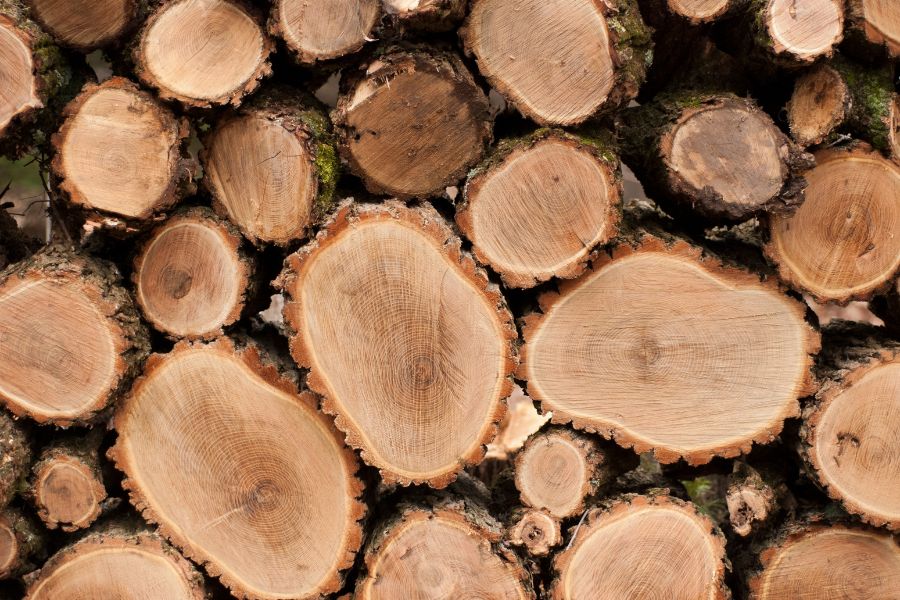
Sustainable Harvesting Practices
When harvesting locust firewood, it is important to follow sustainable practices to ensure the long-term health of locust tree populations.
Consider selective cutting methods, which involve removing mature trees while leaving younger ones to continue the growth cycle. This approach promotes regeneration and maintains a healthy forest ecosystem.
Proper Seasoning and Storage Techniques
Proper seasoning and storage are essential to optimize the burning qualities of locust firewood. After harvesting, allow the wood to dry and season for at least six months to reduce its moisture content. This ensures efficient combustion and minimal smoke production.
Store the seasoned firewood in a dry, well-ventilated area, protected from rain or snow. Stacking the wood off the ground and covering it with a tarp or shelter helps wet wood maintain its quality and readiness for burning.
Burning Tips, Efficiency, and Safety Precautions
Optimal Burning Conditions and Techniques
For optimal burning efficiency, use dry kindling and smaller pieces of seasonal honey locust firewood to start the fire. Once the fire is established, gradually add larger pieces of wood.
Maintain proper airflow in your wood stove or fireplace to promote complete combustion and minimize smoke production.
Regularly remove ash buildup to maintain efficient airflow and prevent airway blockages.
Safety Measures for Burning Locust Firewood
Safety should always be a top priority when using black locust tree wood. Keep flammable materials away from the fireplace or wood stove.
Install smoke detectors and carbon monoxide detectors in your home and check them regularly. Never leave the fire unattended; ensure it is fully extinguished before leaving the room or going to bed. Use appropriate fireproof gloves and tools when handling hot firewood or maintaining the fire.
When Is the Best Time to Cut Black Locust for Firewood?
The best time to cut black locusts for firewood is typically during late winter or early spring when the tree is dormant. During this time, the sap content is lower, resulting in faster drying and better seasoning of the wood.
Cutting black locust wood during the dormant period allows for optimal moisture content reduction, which is crucial for efficient combustion and minimal smoke production.
By cutting black locust tree at the right time, you can ensure that the firewood will season effectively and provide optimal burning qualities.
What Does Black Locust Firewood Look Like?
Black locust firewood has distinct visual characteristics. The wood is typically a pale yellow to golden brown when freshly cut.
It darkens to a rich reddish-brown or deep dark-brown color as it ages and seasons. Black locust firewood often showcases a straight and consistent grain pattern, enhancing its aesthetic appeal. The wood is dense and heavy, providing a sense of quality and durability.
How Long Does a Cord of Black Locust Firewood Last?
The longevity of a cord of black locust wood can vary depending on several factors, including the burning conditions, frequency of use, and size of the firewood pieces.
Generally, a cord of well-seasoned black locust wood can last a considerable amount of time. With its high density and slow burn, black locust good firewood offers a longer burn time than many other wood types. If you want to learn about other types of wood check the articles about Elm, Hackberry, Birch, and Poplar firewood.
However, specific burn times can vary depending on individual circumstances and preferences.
How Do I Identify a Honey Locust Tree?
Identifying a honey locust tree involves recognizing key characteristics of the species. Honey locust trees typically have compound leaves with numerous small leaflets.
The leaflets are arranged in clusters, creating a feathery appearance. The branches of honey locust trees often bear sharp thorns, which can help distinguish them from other tree species. The thorns are present on both younger and older branches, providing a useful identification feature.
Also, honey locust trees produce long, flat seed pods containing edible pulp, further aiding in their identification.
Conclusion
Whether black locust or honey locust offers several benefits for heating purposes. Black locust provides sustained heat output and long burn times, making it ideal for larger spaces and colder climates.
Honey locust, on the other hand, burns cleanly with minimal smoke production, making it suitable for smaller areas and situations where air quality is a priority. With proper harvesting, seasoning, and storage techniques, this firewood can be a reliable and efficient source of heat.
By following optimal burning conditions and adhering to safety precautions, you can enjoy the warmth and comfort of locust firewood while ensuring a safe and enjoyable fire-burning experience.

